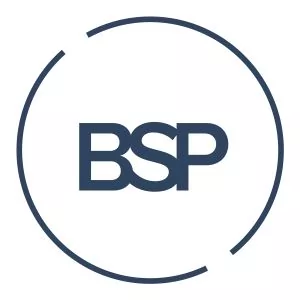1. Summary
On July 3rd 2012 the Luxembourg parliament approved draft law no. 5978 relating to the squeeze out and sell out of securities admitted to trading on a regulated market (the "Law"). The Law provides the possibility for majority shareholders to exercise squeeze out rights and minority shareholders to exercise sell-out rights outside the context of a takeover bid.
"Squeeze Out" means a situation where a majority shareholder can compulsorily acquire the securities of all the remaining holders of the relevant securities of the company.
"Sell Out" means a situation where a security holder may require the majority shareholder to acquire his securities.
2. Scope
2.1. The Law applies to companies whose registered office is in Luxembourg and where some or all of its voting securities:
2.1.1. are admitted to trading on a regulated market in one or more States of the European Economic Area;
2.1.2. were admitted to trading on a regulated market in one or more States of the European Economic Area but no longer are, provided they were removed from trading less than five years ago;
2.1.3. were the object of a public offer which started less than five years ago.
2.2. The Law does not apply to open-ended funds.
2.3. The Law does not apply to public offers carried out in accordance with Directive 2004/25/CE (the Takeover Directive) until expiration of the rights arising subsequent to such public offer i.e. until expiration of the squeeze out and sell out rights arising thereunder, if any, and during a period of six months thereafter.
3. Important Definitions
3.1. A "Majority Shareholder" is defined as any physical or legal person who holds, alone or in concert with others, directly or indirectly, at least 95% of the capital carrying voting rights and 95% of the voting rights of a company that falls within the scope of the Law.
3.2. "Securities" are defined as transferable securities of a company to which voting rights are attached including certificates representing shares to which the possibility to give voting instructions are attached.
4. Competent authority and fees
4.1. The Law has appointed the Luxembourg Commission de Surveillance du Secteur Financier ("CSSF") as the competent authority to supervise the applicability of the provisions provided therein and has vested it with the broadest powers in this respect.
4.2. In compliance with the authority and the powers mentioned above, (see 4.1), the Law provides for sanctions in case of violation of the Law, which are of two categories depending on the nature of the violation: administrative fines and criminal penalties.
4.3. The Law provides for a possible means of recourse before the administrative courts against some decisions taken by the CSSF.
4.4. A squeeze out and a sell out may entail the payment of fees to the CSSF.
5. Notification and Information Requirements
5.1. A Majority Shareholder is subject to notification requirements towards the Company and the CSSF in three circumstances:
5.1.1. where he becomes a Majority Shareholder,
5.1.2. where he is a Majority Shareholder and his holding falls below one of the 95% thresholds (capital carrying voting rights or voting rights), and
5.1.3. where he is a Majority Shareholder and he acquires supplementary Securities.
5.2. The notification must take place as soon as possible and at latest within four working days of the triggering event.
5.3. The notification shall contain the information set out in article 3(3) of the Law and the company concerned shall publish such information within three working days. The CSSF shall also make such information available on its website for a period of twelve months.
6. Squeeze Out
6.1. When a holder of Securities is or becomes a Majority Shareholder he can compulsorily acquire the Securities of all the minority security holders provided that the information referred to in 5.4 below is provided to the CSSF at a moment in time when the company falls within the scope of the Law as described in 2 above.
6.2. In situations where there are various classes of Securities, only classes of Securities for which the 95 % threshold has been passed can be acquired provided that the Majority Shareholder must also have passed 95 % of total Securities. Where the Company has issued transferable securities (which are tradable on the capital markets) conferring a right to acquire a Security for which the threshold has been passed then the Majority Shareholder may compulsorily acquire such transferable securities also.
6.3. Example
Company X has issued class A shares, class B shares and bonds convertible into Class A shares. Majority shareholder Y holds 96 % of the class A Shares and 95 % of the entire voting capital but only 94% of the Class B Shares. In such case he can squeeze out holders of class A shares and holders of the convertible bonds but not the holders of class B shares.
6.4. The Majority Shareholder must ensure that he can provide the entire consideration for such squeeze out in cash and must also undertake to bring the squeeze out to a close.
6.5. The CSSF must first be informed of the decision of the Majority Shareholder to exercise the squeeze out right. Then the concerned company must be notified accordingly. In addition the Majority Shareholder must publish its decision without delay. The concerned company must ensure that the information is transmitted to those security holders whose securities are not admitted to trading. The publication must contain a minimum amount of information including, the name of the expert that will determine the "faire price" and the proposed means of payment.
6.6. The squeeze out must be exercised at a fair price on the basis of objective and adequate methods applied in case of transfer of assets.
6.7. Within one month of transmission of the information to the CSSF, the Majority Shareholder shall provide to the CSSF the proposed price and a valuation report relating to the Securities and, if necessary, any other transferable securities covered by the squeeze out. Such information must then be communicated to the concerned company and published.
6.8. The valuation report shall be drawn up, at the expense of the Majority Shareholder, by an expert of its choice that is independent of any concerned parties and who is free of conflicts of interest. The independent expert, who does not need to be an approved statutory auditor ("réviseur d'entreprises agréé"), must have experience in the valuation of transferable securities and must prepare its report in an objective and adequate manner.
6.9. The CSSF may request the opinion of the management body of the concerned company on the proposed price and may request that such opinion be published.
6.10. Holders of Securities or other concerned transferable securities may oppose the squeeze out during a period of one month from publication of the proposed price.
6.11. In the absence of such opposition, the CSSF shall accept the proposed price as fair and informs the Majority Shareholder and the concerned company accordingly. Furthermore, the CSSF publishes the price accepted by it as fair price on its website. As soon as possible after this, the Majority Shareholder shall publish information relating to the date and means of the definitive payments.
6.12. If there is opposition to the squeeze out, the CSSF may, on the basis of the rationale put forward request the concerned company to nominate five independent experts (please refer to 6.8 for the characteristics). The CSSF shall designate one of those nominated to provide it with a valuation report within a time limit fixed by the CSSF. The expert shall have regard to the day the proposed price was published when evaluating the fair price. The Majority Shareholder must publish such second report and bears the cost of such second report.
6.13. If there is opposition, the CSSF shall notify its decision on the price to the Majority Shareholder within three months as from the expiry of the time limit to oppose or, if applicable, three months from receipt of the second report. As soon as possible after the CSSF's decision the Majority Shareholder shall publish information relating to the date and means of the definitive payments.
6.14. The CSSF's decision shall be published on its website.
6.15. Any Securities not presented on the day for definitive payment are transferred by operation of law to the Majority Shareholder on the working day following such date against deposit of the purchase price.
7. Sell-Out
7.1. If a Security holder becomes a Majority Shareholder or if it is already a Majority Shareholder and acquires further Securities, the holders of the remaining Securities may, provided the following conditions are met, require such Majority Shareholder to purchase their Securities.
7.2. The sell out right may only be exercised if the date on which the CSSF is informed in accordance with 7.3 below intervenes at a date whereby: (i) the conditions in 2.1 are met, (ii) the publication of the acquisition in conformity with section 5 above is no older than three months, and (iii) the last sell out initiated by a Security holder was at least two years before the publication of the fair price by the CSSF on its website (see 7.12 below).
7.3. Once a Security holder decides to exercise his sell out right he must inform the Majority Shareholder by registered letter with a copy to the CSSF and to the concerned company.
7.4 The sell out must be exercised at a fair price on the basis of objective and adequate methods applied in case of transfer of assets.
7.5. Within one month of the transmission of the information to the CSSF, the Majority Shareholder shall provide to the CSSF the proposed price and a valuation report. The Majority Shareholder must then communicate to the concerned company and publish the fact that it has been notified of a sell-out request, the proposed price and the valuation report.
7.6. The valuation report shall be drawn up, at the expense of the Majority Shareholder, by an expert with the same characteristics as under 6.8 above.
7.7. The CSSF may request the opinion of the management body of the concerned company on the proposed price and may request that such opinion be published.
7.8. Security holders who exercised the sell out right or other security holders who wish to have their Securities purchased in the sell out have one month from the publication referred to in 7.5 above to oppose the proposed price. All Security holders who oppose the proposed price are obliged to participate in the sell out. In the absence of such opposition, the CSSF shall accept the proposed price as fair and shall inform the Majority Shareholder and the concerned company.
7.9. As soon as possible after this, the Majority Shareholder shall publish information relating to the date and means of the definitive payments.
7.10. If there is opposition to the sell out, the CSSF may, on the basis of the rationale put forward request the concerned company to nominate five independent experts. The CSSF shall designate one of those nominated to provide it with a valuation report within a time limit fixed by the CSSF. The expert shall have regard to the day the proposed price was published when evaluating the fair price. The Majority Shareholder must publish such second report and bears the cost of such second report.
7.11. If there is opposition, the CSSF shall notify its decision on the price to the Majority Shareholder within three months as from the expiry of the time limit to oppose or, if applicable, three months from receipt of the second report. As soon as possible after this, the Majority Shareholder shall publish information relating to the date and means of the definitive payments.
7.12. The CSSF's decision shall be published on its website.
7.13. Security holders who did not exercise their sell-out right by the date for definitive payment may present their Securities for purchase at the fair price during a period of time fixed by the CSSF which will not be less than one month nor more than six months.
7.14. A Security holder who presents his Securities in the sell out must present all of the Securities that it holds.
8. Transitory Provisions
8.1. Any shareholder who is a Majority Shareholder on the day the Law enters into force is obliged to notify the concerned company and the CSSF and provide them with certain of the information set out in 5.3. above within two months of the entry into force of the Law. The company shall publish such information within three months of the entry into force of the Law. The CSSF shall publish on its website for a period of twelve months the list of companies for which it has received such notification.
8.2 As an exception to the general rule (see above 2.1.2), for a period of three years from the entry into force of the Law, a Majority Shareholder may exercise its squeeze out right over the Securities of a company that were admitted to trading but no longer are, provided that the date they were removed from trading was after January 1, 1991.
8.3. Similarly, as an exception to the general rule (see 7.1 above) security holders may exercise their sell out rights for a period of three years from the entry into force of the Law even if the Majority Shareholder does not acquire supplementary Securities, in relation to a company the Securities of which were admitted to trading but no longer are provided that the date they were removed from trading was after January 1, 1991.
8.4. The Law will enter into force on the first day of the third month following publication in the Mémorial.
The content of this article is intended to provide a general guide to the subject matter. Specialist advice should be sought about your specific circumstances.



